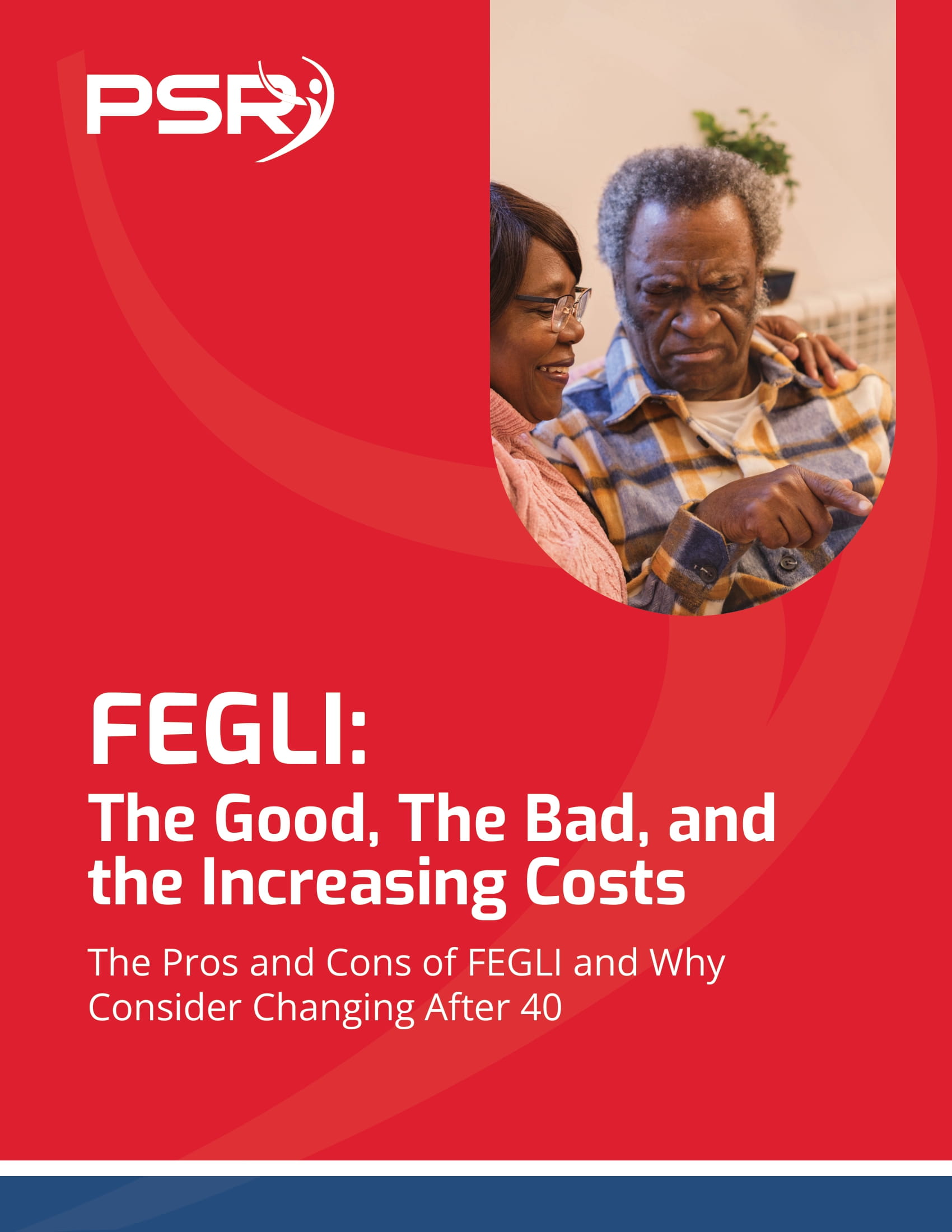Key Takeaways
-
Combining Medicare with the Federal Employees Health Benefits (FEHB) Program can significantly lower your out-of-pocket healthcare costs and provide more comprehensive coverage.
-
Knowing how Medicare and FEHB coordinate will help you make informed decisions about enrollment, cost-sharing, and long-term healthcare planning.
How Medicare and FEHB Create a Stronger Healthcare Safety Net
- Also Read: How Survivor Benefits Provide Federal Families with Stability After the Loss of a Loved One
- Also Read: Federal Employees, Here’s What You Need to Know About Survivor Benefits Before Retiring
- Also Read: Medicare Enrollment Changes That Every Federal Employee Needs to Pay Attention to This Year
Here’s how Medicare and FEHB work together to help you keep your healthcare costs in check.
1. Medicare Reduces What You Pay Out-of-Pocket with FEHB
One of the biggest advantages of enrolling in Medicare once you retire is the way it can lower your out-of-pocket costs under FEHB.
Medicare as Primary Payer Reduces Your Costs
Once you enroll in Medicare Part A and Part B, Medicare typically becomes the primary payer for covered services, and your FEHB plan acts as secondary coverage. That means Medicare pays first, and then your FEHB plan picks up the remaining balance. This coordination can significantly reduce or even eliminate your copayments, coinsurance, and deductibles under FEHB.
-
Medicare Part A covers hospital care with no additional premium for most retirees, as long as you have at least 40 quarters (10 years) of eligible work history.
-
Medicare Part B covers doctor visits and outpatient care, though it comes with a monthly premium. However, some FEHB plans offer reimbursements to help cover this cost.
FEHB as Secondary Coverage Fills in the Gaps
FEHB coverage becomes secondary once Medicare is in place, meaning it covers costs Medicare doesn’t fully pay for, such as:
-
Deductibles
-
Coinsurance amounts
-
Services that Medicare doesn’t fully cover
This means fewer out-of-pocket expenses for you, especially when it comes to expensive medical procedures or frequent doctor visits.
Additionally, having FEHB as secondary coverage ensures that any unexpected medical expenses, including those associated with chronic illnesses or extended hospital stays, don’t result in overwhelming financial burdens.
2. Prescription Drug Costs Are Lower with Medicare and FEHB Together
Prescription drugs are often one of the biggest expenses in retirement. By coordinating your FEHB plan with Medicare Part D or FEHB’s built-in prescription drug coverage, you can lower what you pay for medications.
FEHB Plans Often Include Prescription Drug Benefits
Most FEHB plans already include robust prescription drug coverage that meets or exceeds the coverage offered by Medicare Part D. If you keep your FEHB plan in retirement, you don’t necessarily need to enroll in a separate Medicare Part D plan because your FEHB coverage will continue handling prescription costs.
However, if you do choose to enroll in a Medicare Part D plan, some FEHB plans will coordinate benefits, potentially lowering your out-of-pocket drug expenses even more.
The 2025 Medicare Out-of-Pocket Drug Cost Cap
A major change for 2025 is the introduction of a $2,000 out-of-pocket cap on prescription drug costs under Medicare Part D. If you decide to enroll in Medicare Part D alongside your FEHB plan, this cap limits how much you spend annually on medications, making your long-term prescription costs more predictable.
Having both Medicare and FEHB means that you can take full advantage of cost-sharing provisions that minimize out-of-pocket expenses. With drug prices continuing to rise, this dual coverage provides peace of mind for those relying on multiple prescriptions.
3. Combining Medicare and FEHB Protects You from High-Cost Medical Events
One of the most significant risks in retirement is facing an unexpected major medical event. Hospital stays, surgeries, and chronic conditions can lead to high out-of-pocket expenses if you don’t have adequate coverage. Fortunately, having both Medicare and FEHB gives you an extra layer of financial protection.
Lower Hospital Costs with Medicare Part A
Medicare Part A covers hospital care, including inpatient stays, skilled nursing facility care, and hospice care. Since most federal retirees qualify for premium-free Medicare Part A, enrolling in it means you won’t need to rely solely on your FEHB plan for hospitalization coverage.
-
In 2025, the Medicare Part A deductible is $1,676 per benefit period. However, your FEHB plan can cover most or all of this cost as secondary insurance.
-
If your hospital stay extends beyond the Medicare-covered period, your FEHB plan provides extended coverage.
FEHB Covers What Medicare Doesn’t
Even with Medicare covering hospital stays and outpatient care, FEHB provides additional coverage for:
-
Hearing aids, dental, and vision care, which Medicare doesn’t cover.
-
International travel coverage—Medicare generally doesn’t cover medical services outside the U.S., but some FEHB plans do.
-
Services that might not be fully covered by Medicare, such as physical therapy, rehabilitation, and alternative treatments.
Having both Medicare and FEHB ensures that you are covered for routine care as well as high-cost emergencies, preventing a single medical event from derailing your retirement finances.
What to Consider Before Enrolling in Medicare with FEHB
While having both Medicare and FEHB can save you money, it’s important to consider a few key factors before making your enrollment decisions:
-
Enrollment Deadlines: You become eligible for Medicare at age 65. If you’re retired and don’t enroll during your Initial Enrollment Period, you could face late enrollment penalties for Medicare Part B.
-
FEHB Premiums: Keeping your FEHB plan in retirement means you’ll continue paying its premiums. Some retirees find that dropping FEHB and relying on Medicare alone isn’t worth the savings, as FEHB covers additional benefits Medicare doesn’t.
-
Medicare Part B Premiums: In 2025, the standard Part B premium is $185 per month. Some FEHB plans offer reimbursement programs to offset this cost, so check your plan’s benefits.
Ultimately, the decision to keep both Medicare and FEHB depends on your individual health status and financial goals. Reviewing your options early will help you avoid unnecessary expenses and ensure continued coverage.
Should You Enroll in Both Medicare and FEHB? Here’s the Bottom Line
If you’re a retired federal employee, combining Medicare with FEHB can provide a powerful, cost-effective healthcare solution. Medicare reduces your out-of-pocket costs, while FEHB offers additional benefits that Medicare doesn’t cover, such as dental, vision, and overseas medical care. Together, they create a well-rounded healthcare plan that helps you avoid high medical expenses in retirement.
The best strategy depends on your health needs, financial situation, and expected medical expenses. Before making any final decisions, it’s wise to review your FEHB plan’s benefits and speak with a licensed agent to ensure you’re making the most informed choice.
To get personalized guidance, reach out to a licensed agent listed on this website. They can help you navigate Medicare and FEHB options to find the best plan for your healthcare needs.









